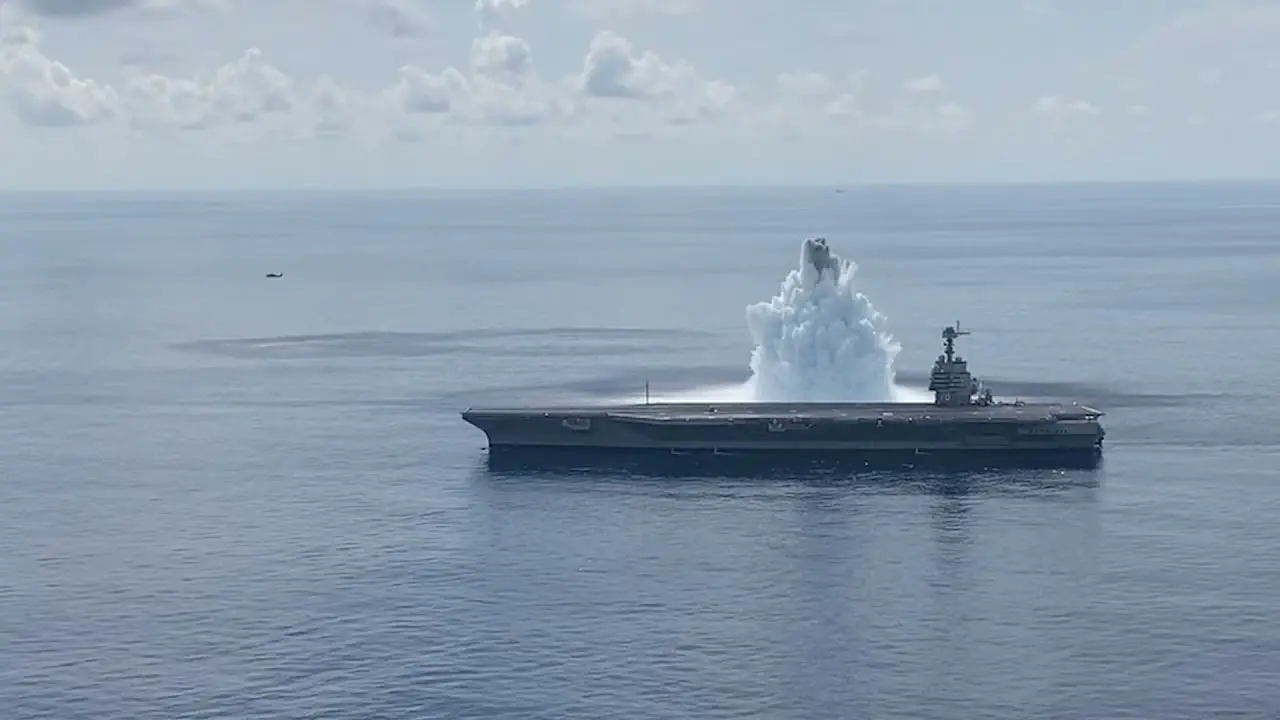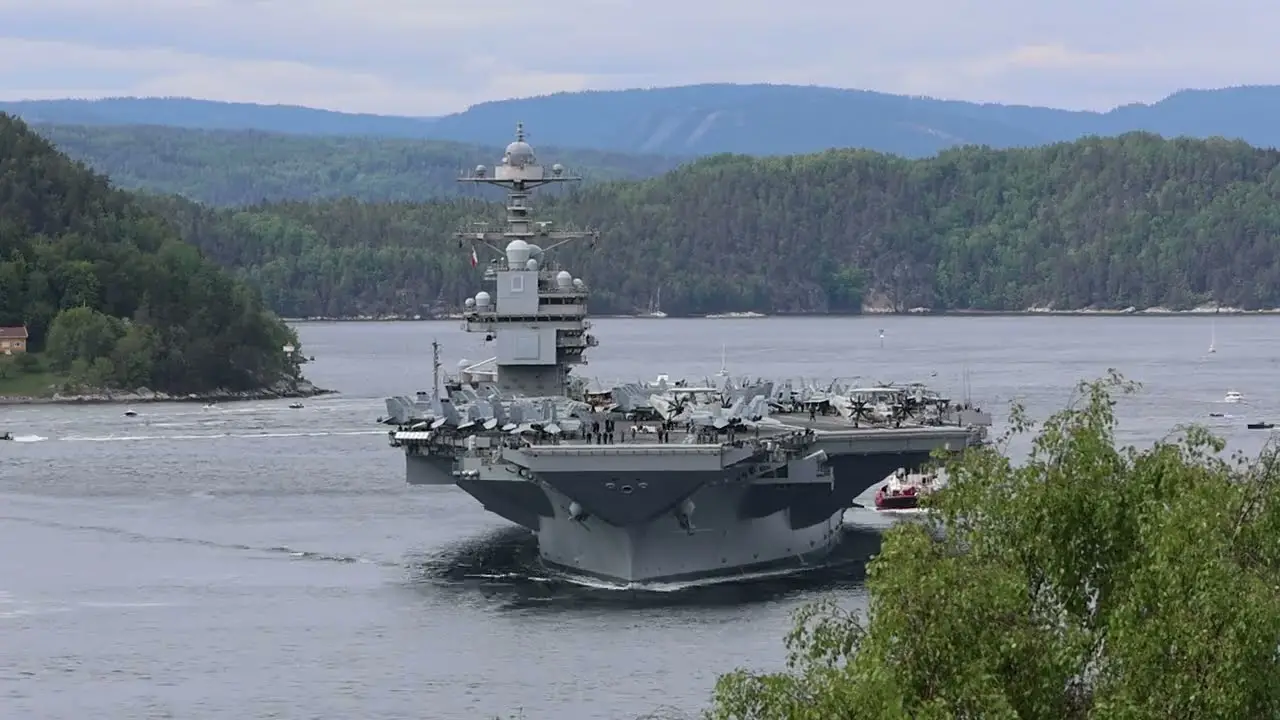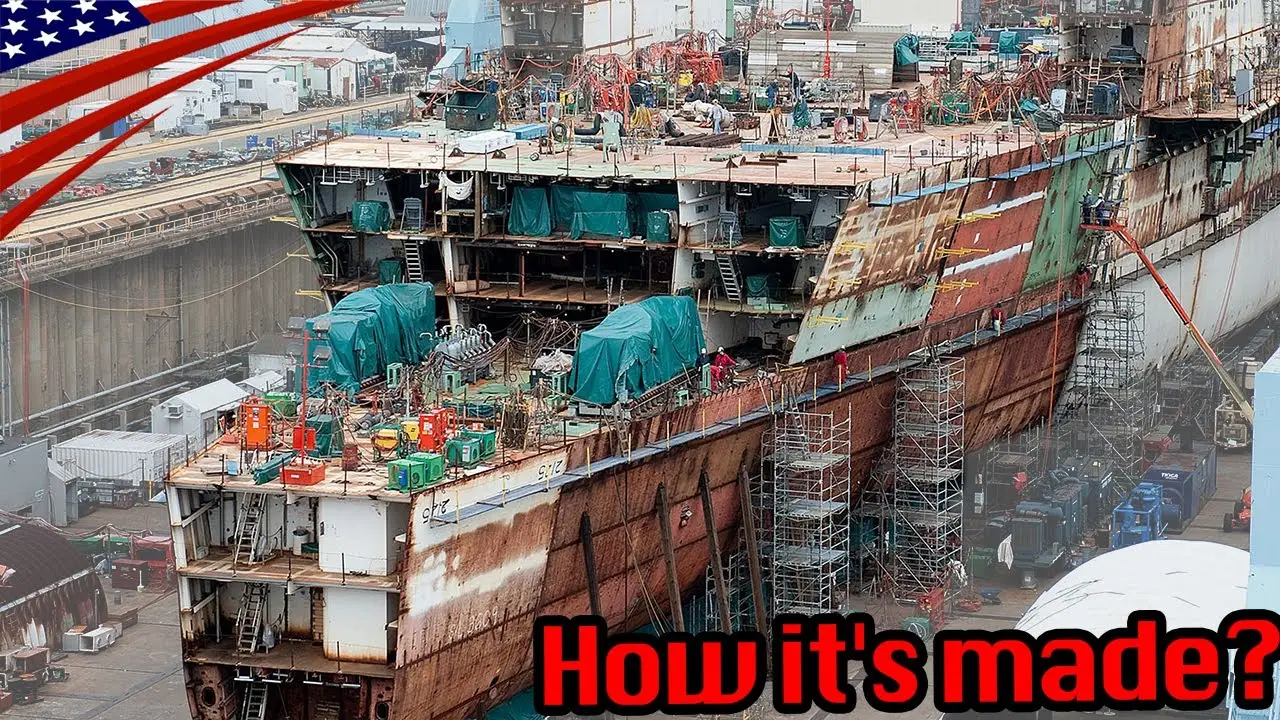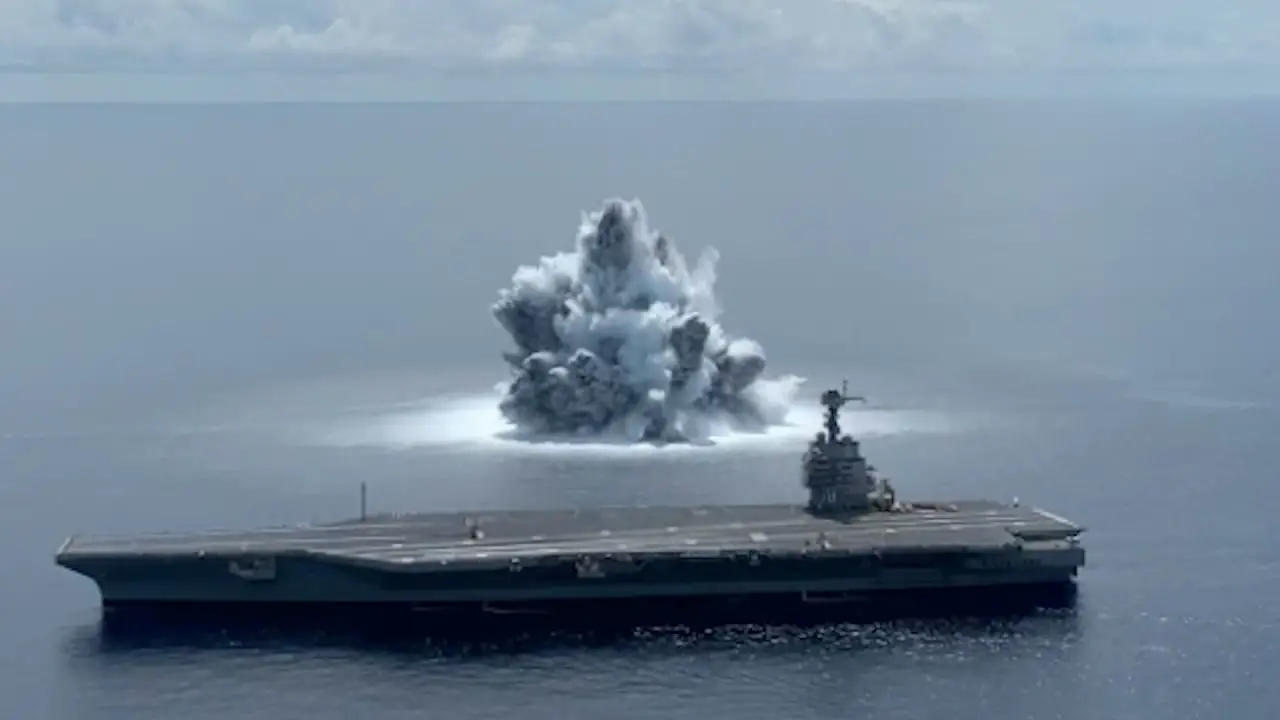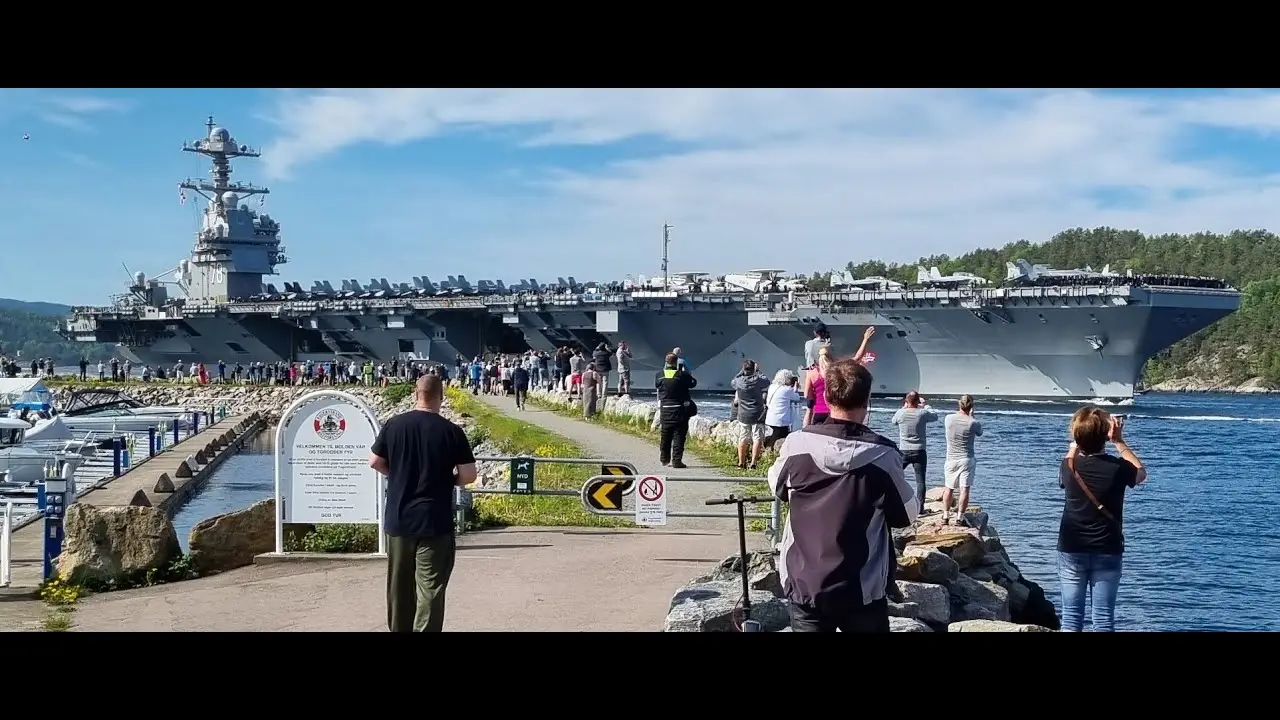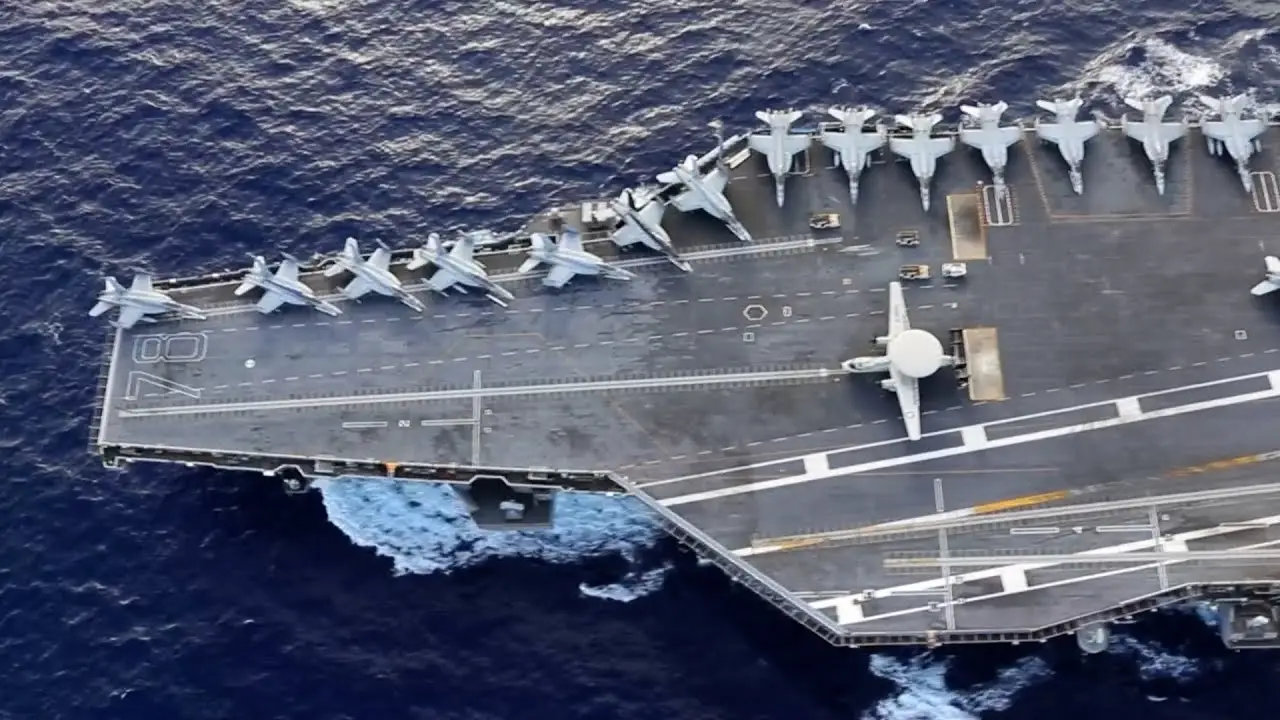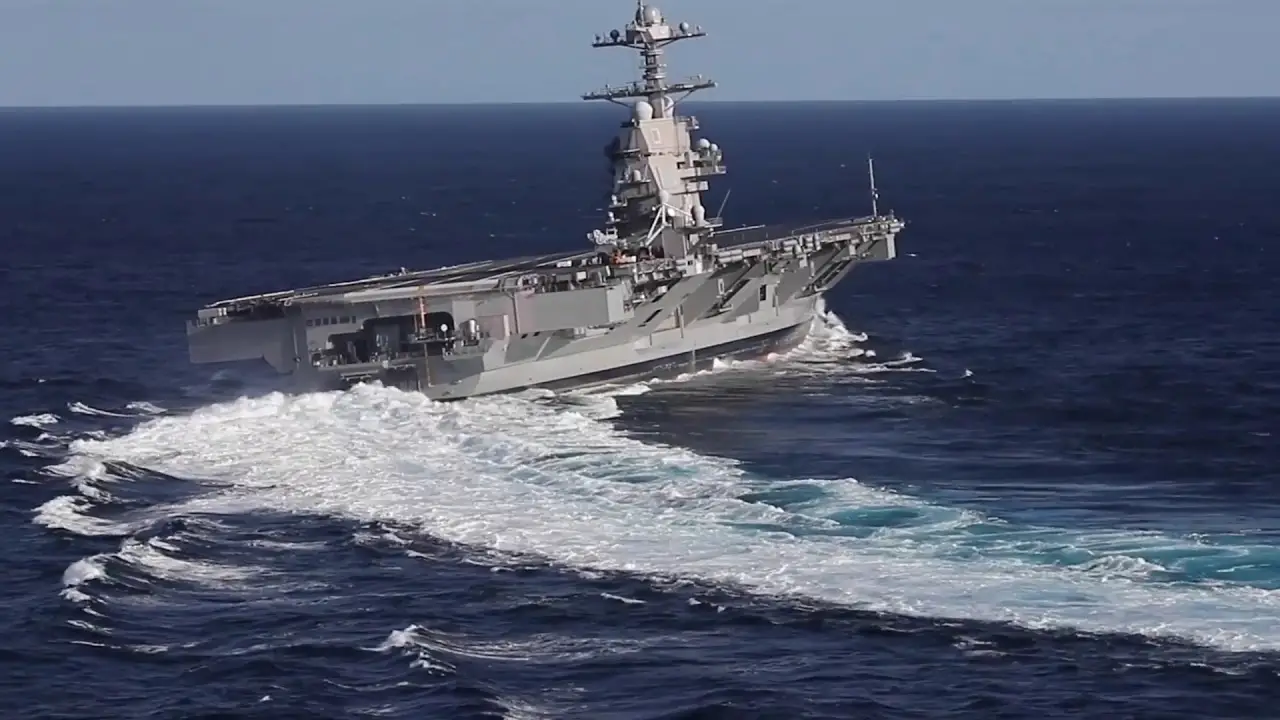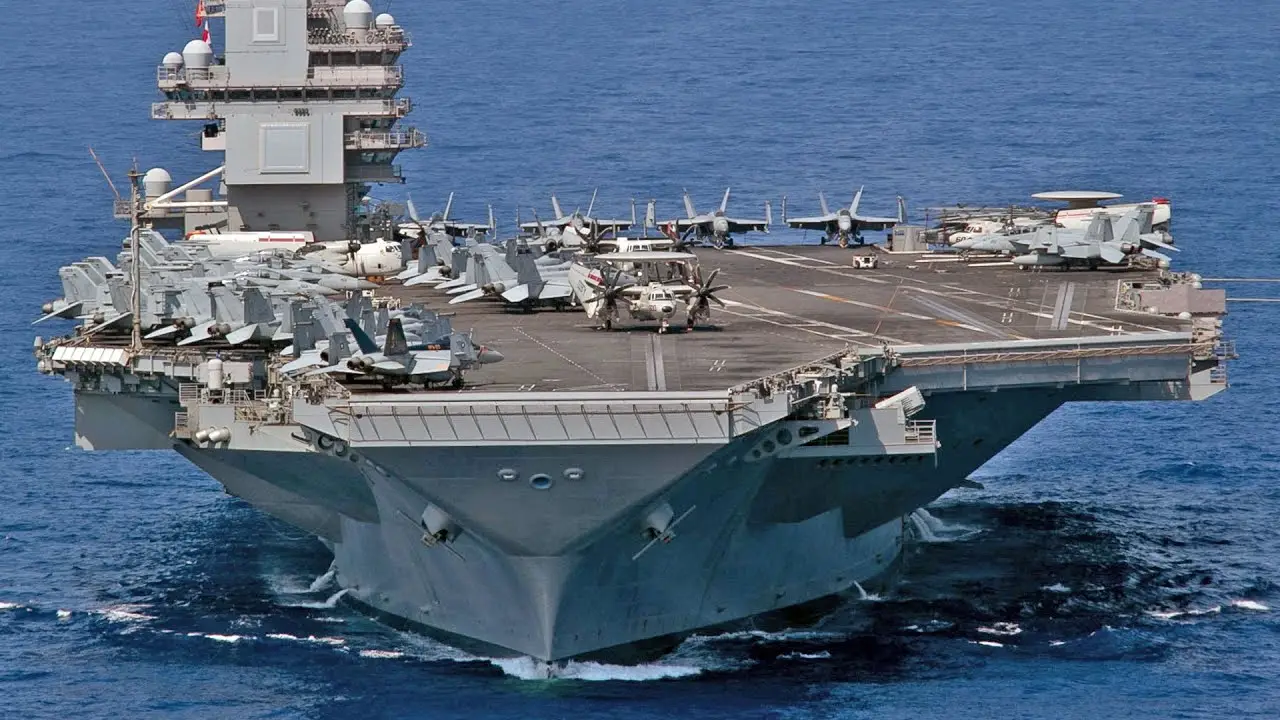Introduction to USS Gerald R. Ford (CVN-78)

The USS Gerald R. Ford (CVN-78) is the lead ship of the new Ford-class aircraft carriers in the United States Navy. Named after the 38th President of the United States, the USS Gerald R. Ford is a game-changing vessel that brings advanced technology and capabilities to the naval fleet. It is considered to be the most technologically advanced and heavily armed aircraft carrier in the world.
In this blog post, we will delve into the history, design, features, and impact of the USS Gerald R. Ford, shedding light on its importance to naval warfare.
History of USS Gerald R. Ford (CVN-78)
The idea for the USS Gerald R. Ford was first proposed in the late 1990s as a replacement for the Nimitz-class aircraft carriers. The Nimitz-class carriers were built during the Cold War era and were starting to show their age. It was decided that a new class of carriers with advanced capabilities would be needed for future naval operations. In 2008, the US Navy awarded the contract to build the first Ford-class carrier to the Newport News Shipbuilding company.
Construction on the USS Gerald R. Ford began in November 2009 at the Newport News Shipyard in Virginia. The construction was completed in 2015, and the vessel was launched in November of that year. After undergoing extensive systems testing and sea trials, the USS Gerald R. Ford was finally commissioned into service on July 22, 2017. This marked the beginning of a new era in naval warfare.
Design and Construction of USS Gerald R. Ford (CVN-78)
The USS Gerald R. Ford was designed to be a more capable and efficient aircraft carrier than its predecessors. It has a length of 1,106 feet, making it the longest aircraft carrier in the world. The design of the ship incorporates many new technologies, including an Electromagnetic Aircraft Launch System (EMALS) and Advanced Arresting Gear (AAG). These systems replace the traditional steam-powered catapults and arrestor wires used on previous carriers, making it more efficient and reducing wear and tear on aircraft.
The ship also has a redesigned flight deck, with a larger area for takeoff and landing operations. It can accommodate up to 75 aircraft, compared to the 60 that the Nimitz-class carriers can handle. The USS Gerald R. Ford also has a nuclear propulsion system, which gives it virtually unlimited range and allows it to be operational for long periods without refueling.
Features and Capabilities of USS Gerald R. Ford (CVN-78)
One of the most notable features of the USS Gerald R. Ford is its advanced technology. Along with the EMALS and AAG systems, the carrier also has a Dual Band Radar (DBR) system, which combines X-band and S-band radars for improved detection and tracking of incoming threats. It also has a new weapons elevator system, which uses electromagnetic linear motors instead of cables, making it faster and more reliable.
Moreover, the USS Gerald R. Ford has a redesigned island structure, which houses the ship’s command center and navigation facilities. It also includes a new integrated mast, which combines various sensors and communication systems into one structure, reducing the ship’s radar cross-section and making it less vulnerable to detection by enemy forces.
The carrier also has a vast aircraft storage area, which can hold up to 3.4 million pounds of aircraft equipment and supplies. This allows the USS Gerald R. Ford to carry out longer deployments without having to rely on supply ships, making it more self-sufficient. Additionally, the ship’s nuclear propulsion system enables it to travel at speeds exceeding 30 knots, giving it the ability to respond quickly to any situation.
Exploring the History of USS Saratoga (CV-3) A Legendary Aircraft Carrier
Commissioning and Service of USS Gerald R. Ford (CVN-78)
The USS Gerald R. Ford was commissioned into service on July 22, 2017, at the Norfolk Naval Station in Virginia. The commissioning ceremony was attended by dignitaries from the Navy and the government, along with former President Gerald Ford’s daughter, Susan Ford Bales. The carrier then underwent a series of trials and tests to ensure that all its systems were functioning correctly.
In January 2018, the USS Gerald R. Ford embarked on its first operational deployment, where it conducted various training exercises and operations in the Atlantic Ocean. It also played a crucial role in providing support for hurricane relief efforts in Puerto Rico. Since then, the carrier has been deployed multiple times, showcasing its capabilities and proving its worth as a vital asset to the US Navy.
Crew and Personnel of USS Gerald R. Ford (CVN-78)
The USS Gerald R. Ford has a crew of over 4,500 personnel, including sailors and aviators. The ship is commanded by Captain John J. Cummings III, who assumed command in 2019. The crew is divided into various departments and teams, each responsible for different aspects of the carrier’s operations.
The personnel onboard the USS Gerald R. Ford are highly trained and experienced, making them capable of operating the advanced technology and systems of the vessel efficiently. They undergo regular training and drills to ensure they are always ready for any situation, making the carrier a formidable force in naval warfare.
Missions and Operations of USS Gerald R. Ford (CVN-78)
The USS Gerald R. Ford is designed to be a multi-mission aircraft carrier, capable of performing a wide range of operations. It can conduct air superiority missions, strike missions, and provide support for land and sea-based operations. Its advanced capabilities make it an essential asset in maintaining control of the seas and projecting power to protect US interests and allies.
The carrier has already been involved in several operations and exercises, showcasing its capabilities and demonstrating the US Navy’s dominance. In 2019, the USS Gerald R. Ford conducted its first live-fire exercise, successfully testing its weapons systems and proving its ability to defend itself and its allies. It continues to participate in various exercises and missions, showcasing its versatility and importance to naval warfare.
Exploring the History and Impact of USS Nimitz (CVN-68)
Impact of USS Gerald R. Ford (CVN-78) on Naval Warfare
The USS Gerald R. Ford is a game-changing vessel that has had a significant impact on naval warfare. Its advanced technology and capabilities have raised the bar for future aircraft carriers, making it a crucial asset in maintaining US superiority at sea. The EMALS, AAG, and DBR systems are revolutionary advancements that have significantly improved the carrier’s efficiency and effectiveness.
Moreover, the USS Gerald R. Ford’s nuclear propulsion system sets it apart from other carriers, giving it unmatched range and endurance. This allows the carrier to stay operational for long periods, giving the US Navy a strategic advantage over its adversaries. The carrier’s larger flight deck and storage capacity also give it the ability to operate more aircraft, making it an even more formidable force.
Future Plans for USS Gerald R. Ford (CVN-78)
The USS Gerald R. Ford is just the first of its class, with three more carriers planned to be built in the coming years. These carriers will incorporate lessons learned from the USS Gerald R. Ford, making them even more advanced and capable. They will also be equipped with the latest weapons and technology, ensuring that the US Navy maintains its superiority in naval warfare.
In addition to building more Ford-class carriers, there are plans to upgrade the current ship. This includes adding new weapon systems, sensors, and communication equipment, further increasing its capabilities. These upgrades will ensure that the USS Gerald R. Ford remains a relevant and potent vessel for years to come.
Conclusion: Legacy of USS Gerald R. Ford (CVN-78)
In conclusion, the USS Gerald R. Ford is a game-changing aircraft carrier that has set new standards for naval warfare. Its advanced technology, capabilities, and design make it the most capable and heavily armed carrier in the world. It has already made a significant impact on naval operations and will continue to do so for years to come.
Named after one of the greatest US Presidents, the USS Gerald R. Ford’s legacy will be one of dominance and superiority. It is a testament to the ingenuity and determination of the US Navy to stay ahead of its adversaries. The future is bright for the USS Gerald R. Ford, and it will undoubtedly play a crucial role in maintaining peace and stability in the seas.
Exploring the History and Impact of USS Dwight D. Eisenhower (CVN-69)

